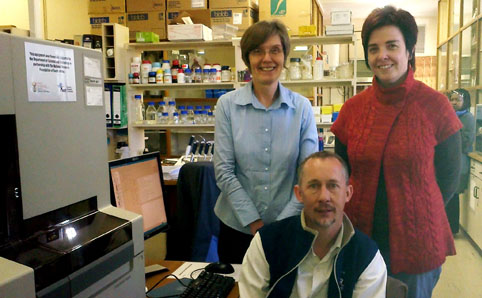 |
Martie Smit, prof Jacobus Albertyn and Carlien Pohl.
Photo: Stefan Lotter |
A second living organism was named after Bloemfontein, adding to the fact that the University of the Free State (UFS) has the largest yeast collection in the Southern Hemisphere.
In an article in the highly acclaimed scientific journal, International Journal of Systematic and Evolutionary Microbiology, three lecturers from the Department of Microbial, Biochemical and Food Biotechnology, at the UFS, Dr Carlien Pohl, Prof. Martie Smit and Prof. Jacobus Albertyn, describe four new yeast species.
One of these species, isolated from pine needles from Bloemfontein, has been named after this city and will be known as Rhodotorula bloemfonteinensis. ‘Rhodo’ refers to the redness of these types of yeast. This makes this yeast only the second living organism to be named after Bloemfontein. The other is a mite (Pilogalumna bloemfonteinensis), which was described in 1972.
In short, yeast is a micro-organism that is part of the fungi family. Prof. Albertyn, “The most common of these are the bakers’ yeast, of which the bloemfonteinensis forms part.”
Among these four species they discovered, the Rhodotorula pini was also discovered on the Bloemfontein Campus of the UFS during December 1995.
“The UFS now has the largest yeast collection in the Southern Hemisphere. All over the world, science is busy researching the field of bio-diversity. This promotes the bio-diversity at the UFS,” Prof. Albertyn says.